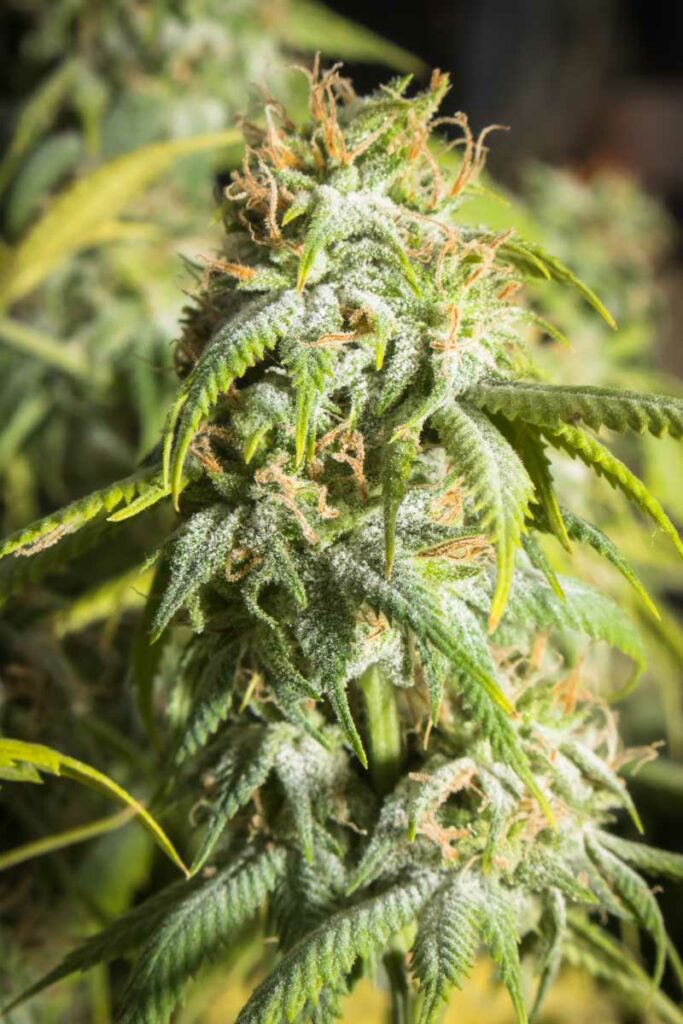Mold is the ultimate nightmare of a cannabis grower. You might have done everything right, but when mold catches up with your fat, potent buds, you’re counting losses!
Growers keep mold at bay by monitoring humidity, but when the buds get infected, little can be done to save them. Most growers will throw away moldy weed because mold is a health risk.
However, sometimes your buds aren’t infected, but you can stomach the reality of tossing all of the buds on the trash.
That would be a total loss, especially if you’ve invested a significant amount of money and time in the growing project.
Water curing is one of the ways that growers treat their mold-infected buds.
What Is Water Curing?
Water curing is the process of curing weed by submerging them in water. The water dissolves the remaining nutrients and other impurities, leaving the buds cleaner.
Water curing might not be as common, but it’s faster since the water can draw out the remaining nutrients quicker than the buds can break them down.
And it’s simpler too. Fill the mason jar with buds and water, then tighten the lid. Change this water every day for between 3-5 days. The water will get clearer after changing it a few times. Stop when the water comes out clean.
When the water is clean enough, remove the buds and dry them for 3 days. Then smoke them!
Water-cured buds shrink more than air-cured buds. The water draws everything that dissolves in the water. Only cannabinoids remain because they aren’t water-soluble.
Because it gives the purest weed, water curing has been the only growers’ hope to saving mold-infected weed. Fungal infections are stubborn, and before you trust water curing to salvage your buds, you want to make sure they’re safe for use.
RELATED READ: How To Dry Buds After Water Curing
Does Water Curing Get Rid Of Mold?
Water curing buds doesn’t get rid of weed because the mold spores don’t get washed away not dissolve in water. They remain logged into the buds, and they contain enough mycotoxins to cause severe respiratory problems. Weed curing can only contain the spread of mold, but it doesn’t get rid of it.
Water curing does well with impurities that dissolve in water, like salts and sugars from excess nutrients. Mold is caused by fungi, and it doesn’t dissolve in water.
Thus, the grey mold will be washed away, but the mold spores will remain in the buds.
Mold spores are very hardy and can survive under conditions where mold cannot grow.
Thus, you can submerge them in water for the entire water curing period, but the spores will be alive.
The environment inside the airtight water curing jar is harsh for the mold to grow, but the spores remain alive in the buds.
If washing the mold away was the solution, then water curing would be worth the hype.
But it isn’t.
Mycotoxins that cause problems when you use moldy weed are present in the mold spores. Meaning, even after water curing your buds, they are still harmful to your health because the mycotoxins don’t leave when you pour the water out. The buds still contain mycotoxins— these cause the various health risks moldy weed is known for!

But Mold Spores Are Everywhere, Right?
Most growers who claim to have used the water curing successfully take comfort that mold spores are everywhere. You can breathe mold spores in the air, and it’s impossible to avoid mold spores.
I spotted a comment in one of the growing forums that claimed that after water curing the buds, the spores that remain become as risky as breathing air—nothing to worry about.
This brings us to the type of mold you’re dealing with in moldy weed how toxic it can be.
Grey mold is the most common mold found in weed. It is particularly dangerous for users with underlying respiratory conditions or weak immune systems.
It can cause a stuffy nose, fever, lethargy, itchy eyes, and upper respiratory symptoms.
These are the risks on the lower spectrum. It can lodge into the lungs at its most dangerous and cause the dreaded chronic Farmer’s Lung.
Once in the lungs, it will trouble your health for the rest of your life unless removed through surgery.
Moldy weed isn’t worth the risk.
The Mediterranean Journal of Hematology and Infectious Diseases reports a case of a patient who had been using 5 joints daily to calm arthritic pain.
The patient had suffered prolonged coughs, spitting out sputum, and chest problems. During treatment, the doctors removed a ball of mold growing in his lungs— caused by smoking moldy weed.
If you think your weed is too precious to throw away, then maybe the patient’s case might change your mind.
Does Water Curing Get Rid Of Powdery Mildew?
Water curing might seem to reduce the severity of powdery mildew because it washes the powder away. But like mold, powdery mildew is also caused by fungi, thus just as hardy as mold spores. Water curing won’t clear the spores from the buds.
The best way to control powdery mildew is by removing the infected buds before harvest. This contains its spread. Otherwise, if your harvested buds already have them, tossing the buds is the best thing to do.
However, because most people consider powdery mildew to be less harmful than mold, they simply water cure the buds and smoke them.
The buds will appear clean and won’t have a weird mold smell, but they aren’t safe. If it’s just a small amount of buds, it makes sense. But prolonged exposure to powdery mildew spores can cause severe respiratory ailments.
How Long Should You Water Cure Buds?
Water curing involves submerging the buds in the water in an airtight container for between 3-5 days. You have to drain the water every day— beginning with yellowish water that appears like tea—until the last day when the water will be clear.
After water curing, the process of drying begins. It will take another 3-4 days to dry the buds before you pack them in a mason jar for storage.
In summary, though weed curing gives more potent, cleaner buds, it doesn’t remove mold from your buds. Mold spores are hardy, are not water-soluble, and remain in the buds— even when submerged in water in an airtight container for days.
REFERENCES:

